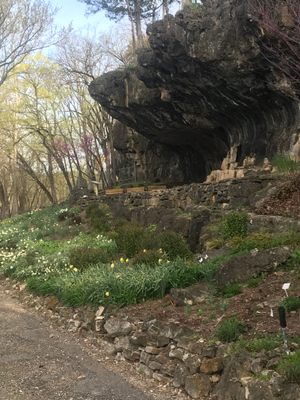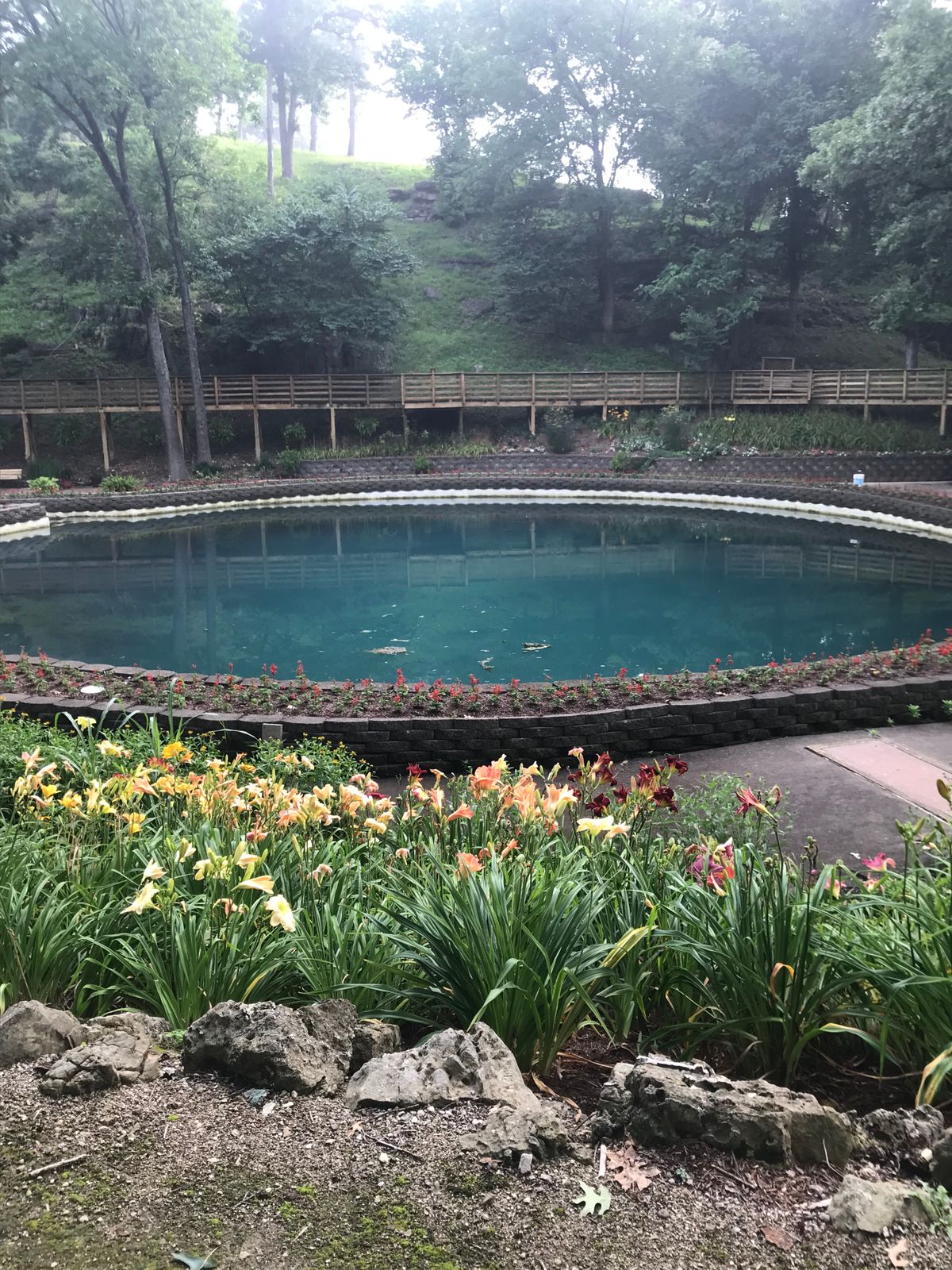About
If you were looking for a single location that embodies Arkansas’s unique history and stunning natural beauty in one fell swoop, you can't go wrong with a visit to the Blue Springs Heritage Center. With a prodigious natural spring, botanical garden, and several historic sites packed into a neat bend of the White River just north of Eureka Springs, it’s a surefire afternoon trip from downtown for forest-bathers and history-buffs alike.
On a daily basis, Blue Springs—the largest in northwest Arkansas—sends 38 million gallons of 54-degree water gushing into a trout-filled lagoon before emptying into the White River. While you might think that photos of the milky blue springwater have been doctored, the hue is actually all-natural. As the water makes its way to the surface, it dissolves limestone from the rocks over which it passes; The blue of the sky at the surface then imparts the mineral-rich waters with its signature cerulean gleam.
While divers have descended to a depth of 229 feet, the spring’s bottom has not yet been located, and the source of all that water is still unknown (some speculate it could originate from as far away as the Pacific Northwest via underground waterways).
Wherever it emanates from, the mineral-rich spring water imbues the heritage center’s 23-acre botanical garden with an arresting vibrancy. Home to native dogwoods, hydrangeas, and magnolias, the grounds burst with color in the warmer months as anemone, bleeding hearts, peonies, and other flowers blossom (a helpful month-by-month bloom guide can be found here).
The spring and other natural features throughout the grounds also made this scenic pocket of the Ozarks a significant site of human activity throughout Arkansas history as well. An archaeological dig undertaken by University of Arkansas faculty and students in 1970 uncovered arrow heads, pottery shards, firepits and other man-made artifacts dated to 8000 B.C. Located nearby the White River—long used in transportation by Indigenous communities—it’s speculated that the area was also used as a trading post by the Osage Nation.
In 1839, a rocky overhang on the premises called Bluff Shelter was used as a stopover on the Trail of Tears. Cherokee are said to have camped under the overhang for several days on their march west toward Oklahoma. The site is on the National Register of Historic Places, and many of the arrowheads found from the 1970 dig are displayed in an on-site museum.
Related Tags
Know Before You Go
Check the Blue Springs website for hours and ticketing information.
Swimming is not permitted in the waters at Blue Springs Heritage Center.
Community Contributors
Added By
Published
November 8, 2022































